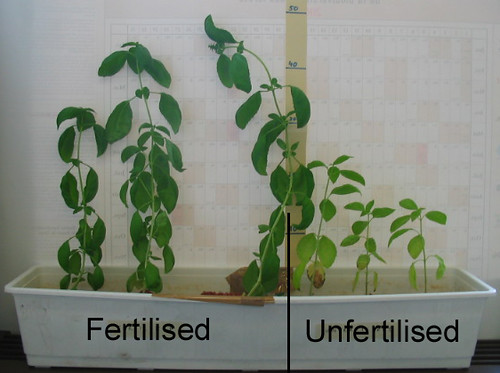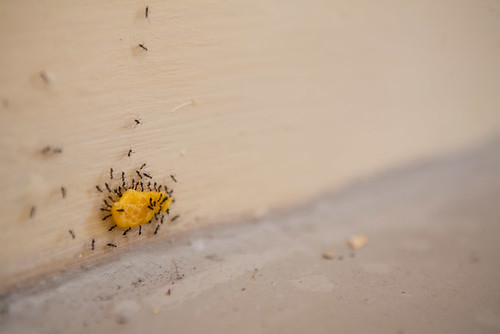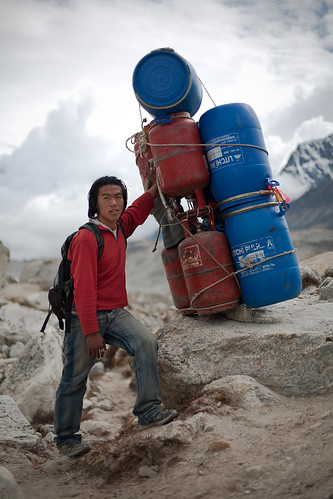.
.
I won! And I came last.
Due to a need to put my signature on a piece of paper in Kathmandu, I missed running the official Everest marathon race on the 29th May. I did run the beautiful course, however, 4 days before, alone, in the snow and rain.
The marathon has been run since 2003 aiming to commemorate the historical ascent of Mount Everest by Late Tenzing Norgay Sherpa and Sir Edmund Hillary on May 29, 1953. From the marathon website:
The Marathon Event is to salute these 2 Great Heroes of our Human Civilization, regardless of their Nationality & origin, ventured out into the unknown and carried Human spirit to the TOP of the World or the Summit of Mother Earth, glorifying the success of the entire mankind civilization.
That's quite a lot to salute.
On the other hand it is reasonably good business taking around 50 or so Westerners on a $2200 trek. Perhaps a bit of the profit can be spent on hiring a copywriter for the website.
Running a marathon on your own is quite different to being part of an event. Firstly, there is no build up to a deadline, a start line or a start time. You can just saunter up to the starting location on any day you please and go. There is no collective excitement or sense of competition or importance and hence people can't really take your proposed activity too seriously as it is just your own private business. And so it is quite pleasant: no nerves, little competitiveness, just a whiff of adventure and a hint that you’re under the direction of your own free-will.
Still, with tired legs from a week of trekking about and tired everything else from poor nights’ sleep at altitude, I had to rely on strength from the pages of a book I had just read.
Mike Stroud’s ‘Survival of the fittest’ recounted his months of dragging a sled across the Antarctic on a starvation diet; his and Ranulf Fienes’ 7 marathons in 7 days on 7 continents just months after Fiennes’ near-fatal heart attack; and the story of the 72 year old ultra-marathoning grandmother competing in an 8 day Eco-challenge across the wild west of the United States. Then there is the amazing
Lizzy Hawker and team who had trodden this trail some years before with Kathmandu as a destination.
The mantra ‘don’t wish it was easier, wish you were tougher’ hung limply in my mind.
So on a glacier at 10:21 on a Monday morning, after several hours of focused procrastination stealing cups of coffee in various expedition mess tents and welcoming climbers back down from up, after slipping on ice and cutting a finger deeply and after chatting with an expedition tired Dawa Stephen Sherpa and about the weather and where the path had gone, I began slowly walking through the thickening snow in the direction of the finish.
The course begins at Everest basecamp, which is a strange and colourful mess of tents planted on the Khumbu glacier. It’s also a sort of psychiatric ward, but that is another story. The stony path winds around the glacial, mini-mountainscape of crumpled ice and meltwater streams. After a kilometre or two, it climbs on to the lateral moraine, the huge pile of debris skirting the glacier. Only after about 5km is solid ground encountered but even then it is far from smooth. This and the following 5km remain over 5000m.
It is this section that the organisers must be referring to when they claim it to be the "World's ultimate race". Yes, its difficult but it is just a limitation. There's less oxygen going to your muscles, including the muscles of your heart and lungs, so it is ever so easy for your oxygen demand to outstrip supply in the heavy blink of an eye leaving you in a crumpled, oxygen-indebted pile needing precious time to recover. To prevent this, I implemented a strict no-running-up-hills policy. I followed it to the letter of the law and it kind of worked: walking is moving and hands-on-knees-panting is not, and it looks silly.
But by jogging here in a careful and controlled manner, it is possible to collect admiring comments from ascending exhausted trekkers, from descending unsummitted mountaineers and even stationary, resting porters who don’t realise what they could also do if they put their baskets down and ran.
Relief, but not much, comes at about 15km where the path heads steeply down hill past Thukla at 4600m and then rolls along looking down on the wide-open Pheriche valley to Dingboche at 4400m. The downhill is wonderful and takes only the minimum of breath to keep you rolling along like a shopping trolley in a sloping car park.
Running your own race you also have to manage your own refreshments. Running on a trekking route makes this easy and you can burst into any lodge and order a cup of hot lemon, black tea or beer of course and hand over your soggy money. This is a slower process that the grab-and-run water station on a marathon course, and out of politeness you'll sit while the tea is made making it a little tricky to start off again, so before you know it you've been stopped for 5 minutes already, longer if the tea is hot.
With the decreased altitude, the 'ultimate race' became simply a beautiful, wet and muddy run in the hills. But the altitude was replaced by rough descents and steep uphills. In Pangboche, just over half way, I was joined by a boy of about 16, who, standing in the doorway of his house, threw down his cigarette and started running. He kept this up for the next 8 kilometres and he was a great help to keep me from stopping to admire the view or re-tie my shoelaces.
At over three-quarters of the way came the first major uphill and it felt like the wobbly change from bike to run in the triathlon as different muscles were asked to wake up. The muddy slope up to Tengboche was like climbing up a greasy pole. Reaching the monastery at the top was a relief but then came 600m of crashing decent to another cup of tea and the realisation that the legs were past their best before date. And then 600m back uphill todo.
The remainder of the marathon was a heavy push up to Kumjung and Khunde where the famous Hillary School is located followed by a decent to Namche Bazaar and the cheering crowds that wouldn’t be there for four more days.
Kumjung and Khunde are beautiful in the rain. Neat and tidy they look like a Welsh holiday village. Not at all like a ‘normal’ Nepali village, whatever that might be, but quiet, litter free, maintained and even with streetlights, though there are no motorable roads. It points to the extensive positive affect Edmund Hillary has had on the area over the last five decades.
And to the final disadvantage of solo marathoning: getting lost. With just 7km to go the stopwatch said 5h15. In actuality, the last 7km would take me 1h30. Some how I left a good trail I believed to be nice but wrong and headed into a pigmy-forest full of pretty, pretty flowers and a rather odd number of animal skulls. The small cattle-trodden paths led in spirals, the branches of the tiny fir branches dropped their caught raindrops onto my legs soaking and quickly chilling me. I thought I saw a ginger bread house for a moment. But it was just a seemingly deserted farm building.
Tired and more than ready for this slow slog to be over, I climbed loose walls and over sun-bleached bones to reach it, hoping that the owner's well worn route to bingo night would also lead to the finish. I was given a helpful shot of adrenaline by a hairy, crazed maniac on a long, but short enough chain who sailed out of his kennel on an upward trajectory. He, or perhaps she, put on a wild show of property-protecting-prowess to earn owner kudos and perhaps a little bit extra food in the bowl after the evidently quiet, trespasser-free recent times.
Within minutes of leaving the dog barking itself hoarse, the coloured rooftops of Namche came into view, sat below in a natural amphitheatre, signalling the near-end of the run. After few hundred steps downhill, a slip and fall that was embarrassing and a few moments of being lost again among winding alleys, I found myself in the heart of an unimpressed Namche Bazaar, wet, cold and wondering what to do next.
From a kind woman at the View Lodge, I borrowed some clothes including a putrid purple tie-dye (tye-die?) ganja t-shirt and a hulk of a down jacket. Dry underpants were not on offer and for that I had to wait for my hired 16-year-old porter to finish the long march he began at 7am that morning with my belongings. He arrived at around 7pm, 12 hours after starting, drenched and smiling claiming that he was just about to turn around and head back to exactly where he came from. I gave him a good tip for his work, happy that he found the lodge given that it had a name different to the one I told him, and sent him off to the cold and bare porter hostel rather than invite him in to share the warmth of the lodge I was in.
And that was the end of it.
I think in the west we hold marathons in pretty high esteem and as ¬¬a benchmark of physical achievement. While there is seemingly mass participation these days, the masses are still in the tiny minority. Most of us spend so much time sitting on our rears for work or leisure and even while moving between the two, that a marathon truly is an achievement of will, coaxing flabby, unconditioned behinds across 42km of paved road for flimsy medals and certificates.
Up in the Khumbu however the marathon seemed more like a quaint fun-run: not particularly necessary nor particularly well understood (where’s the fun). All around you is hard, physical effort on display. Digging fields, planting, grazing cattle, building or repairing houses, hauling firewood. At base camp there are the climbers, the guides, the climbing Sherpas, the ice-fall doctors, the kitchen and cook boys, the load carriers.
The trail itself is not just a pleasant route conjured up by an organising committee but a highway. It’s the main route from village to village and so people are familiar with it as they walk it frequently. Porters, from old to young, male and female, routinely carry baskets along it containing their own bodyweight in goods. Witness young Mr. 90Kg walking through the thin air of basecamp to just above Namche – his walk over two days will be just a few kilometres short of the marathon route. Leisure time sensibly equates to resting time. Apart from the sherpas running the race that is, the winner completing in an amazing 3:40 this year.
So how do I feel after running this ‘ultimate’ marathon? Sub-whatever you might expect, for sure. Neutral, ambivalent, content, could-have-done-better, hungry. It was a beautiful run, and it was for fun, for the experience and really not the extreme event it might have seemed. In contrast to previous marathons, where the next day required negotiating stairs on buttocks and running was out of the question for weeks, this marathon’s surprisingly pain-free morning after brought a 15km jog to Lukla followed by 2 more long days of running to the road head at Jiri 50km further on.
On the first day of my trek into the Everest region I met a girl who turned out to be an ultra-marathoner. She was retreating from a climb after she started hosting a gut soap opera. I asked her how on earth she could manage to run 100 miles in one go. She told me that the legs began to hurt after 15 to 20km but after that the hurt didn’t get much worse. As long as you ate a big burger at 50 miles, was her caveat. Now I see what she meant, and though it would be a veggie burger, keeping going is easier than I ever thought it would be.
It is quite amazing how far what you can do is from what you think you can do. Its about timeI joined the weird extremists and see just how far ‘can do’ can be.
 Namche Bazaar at night © Alex Treadway
Namche Bazaar at night © Alex Treadway




